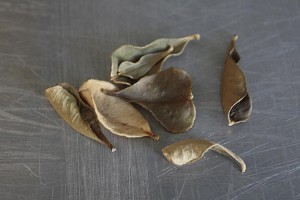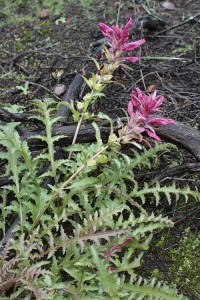On one of my trips out hiking one of the group went running over to a plant in hysterical full bloom, Pedicularis densiflora, something she referred to as “Indian warrior.” It’s a stunning little plant that’s at least somewhat related to the plants in the genus Castilleja that are sometimes called “Indian paintbrush.”
I can’t say that I’ve had a conversation with anyone about this pedicularis. But in this age of heightened cultural sensitivities and school mascots being changed to less potentially offensive characters I’ve been trying to use the more generic name of “paintbrush” when discussing the castillejas. Most people still know what I’m referring to.
A quick look at Calflora turned up dozens of other California natives that have “Indian” in the name, including Palmer’s Indian mallow (Abutilon palmeri), Indian manzanita (Arctostaphylos mewukka), Indian milkweed (Asclepias eriocarpa), Indian strawberry (Duchesnea indica) and Indian headdress (Tracyina rostrata). I’m not Native American but I wonder if these common names might not be the best to use.

Trying to come up with other plant names that have left me a little queasy I thought immediately about the common houseplant, wandering jew, Tradescantia albiflora. The former owners of my house planted some in a bed, and I’m still trying to eradicate it, twenty years later. I keep telling myself that “wandering Jew” is just a plant name and I’m not being anti-semitic when I take the weeding fork to it.
Algerian ivy is another incredibly noxious plant pest, but I know that it’s named after the country where it originates and not the people who live there. In this case I don’t feeling like I’m committing genocide when I yank it out by the yard. Same goes for all the thousands of other plants named after their country of origin, both in their common and scientific latin names.

Looking on the web I came up with a couple other plant names that folks might find offensive. Golden Gate Gardener had a note about Keffir lime, Citrus hystrix, and Keffir lily, Clivia miniata. In Arabic, according to one of the commenters on the post, “keffir” refers to a non-believer, something similar to the way “heathen” is used in English. Possibly objectionable. But when the word traveled to South Africa it became a seriously troubling epithet for the non-white population. Ick. I buy the leaves of this lime in Asian groceries for when I make curry or pasta, and I’ll make a point of calling it something else. Thai lime, maybe. As for Clivia miniata, the latin name comes to the rescue. Even my mother–not prone to show off with scientific names–called it clivia.
Plant names are important. They can tell you plenty about the sociology of those who did the naming, and they can shape how you perceive the plant. I’ll try to pay more attention to names when I use them, and I’ll try to reject the ones that really shouldn’t have a place in modern, accepting, pluralistic society.

